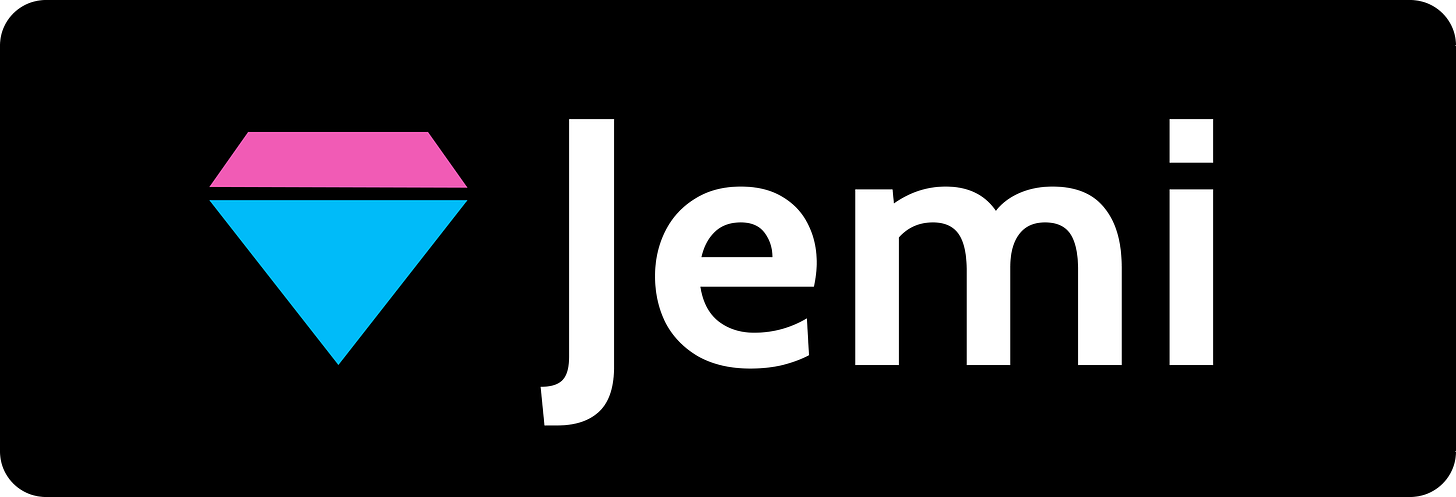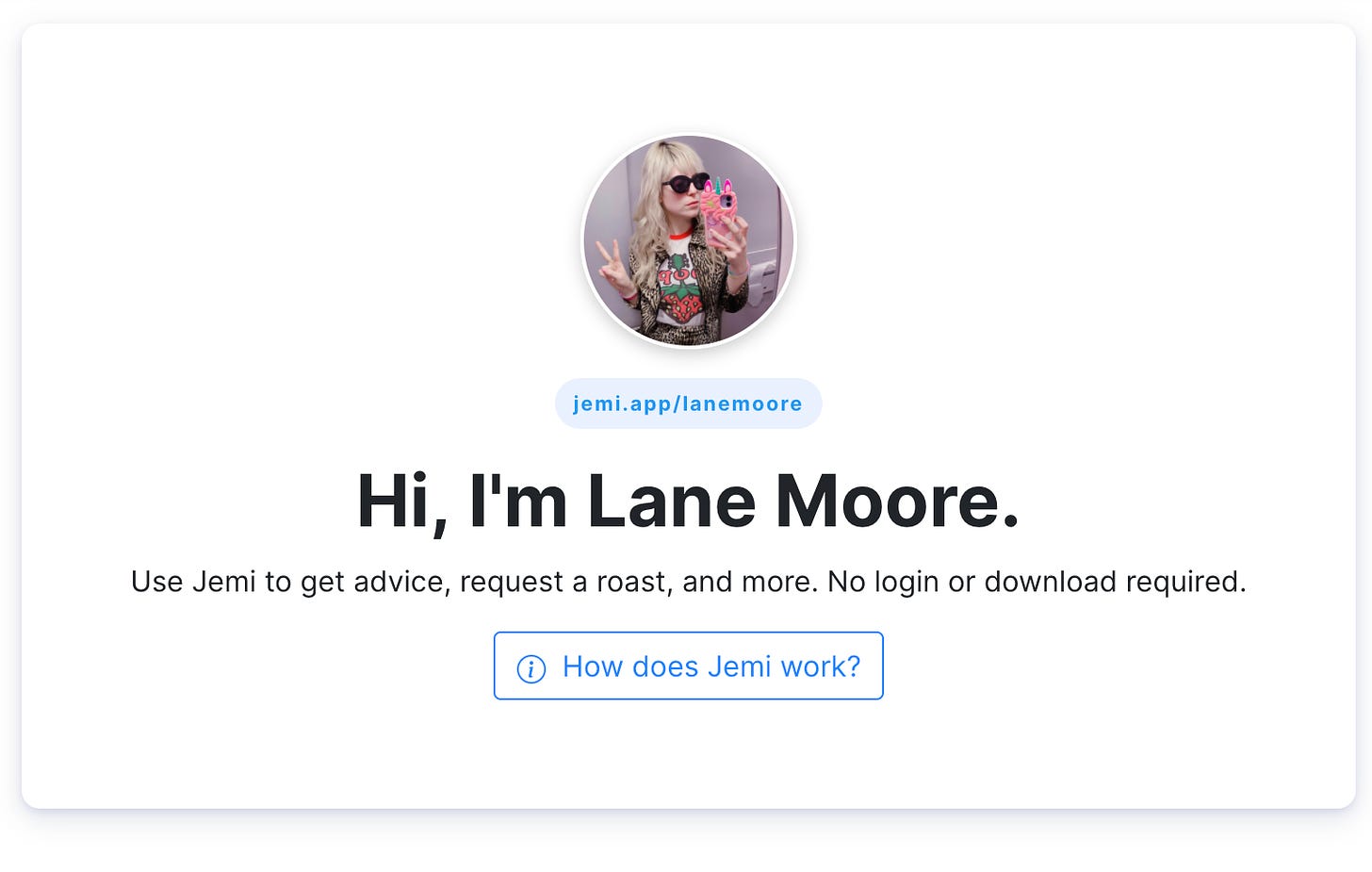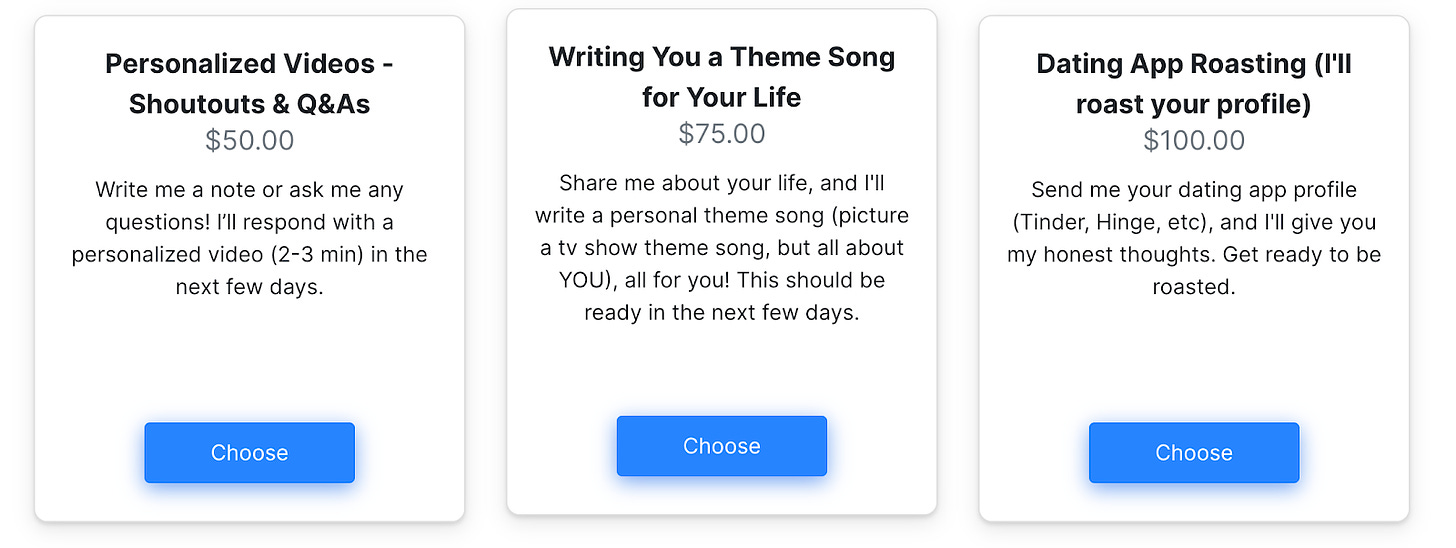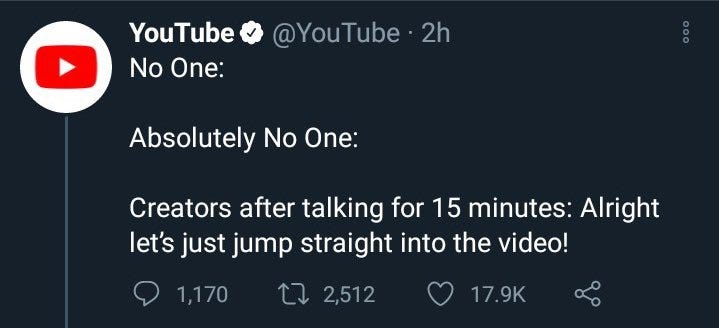The Post-Influencer World
An interview with Jemi + How creators will sell their own brand, rather than someone else's
Welcome back to Entertainment + Tech. Each week will cover an interesting way technology & entertainment are colliding and where things might go from here.
I’m continuing to set up interviews for future editions, so if you have any recommendations on interesting folks to talk to, let me know! You can respond to this email or reach out to me on Twitter.
Also, exciting news! I was accepted to On Deck’s first writing fellowship. My intention is to both push my writing further and get the skills to reach my goal of 1000 subscribers by the end of the year. I’m sure I’ll be sharing more about my experience after the program kicks off. If you or anyone you know will be a part of it, let me know!
Show Me the Money
In the past couple years, we’ve seen a quiet revolution happening with the creator economy. Now, creation is exploding into the mainstream. This shift has been well covered by others, so I won’t dive into the overview here, but I do want to talk about monetization.
Monetization is a critical piece of the growth in the creator economy. Building new ways for creators to make money opens up new opportunities. It creates capacity to support new creators and different kinds of content. Changes in monetization also underlie the shift from “influencer” to “creator”. To have a fully-functioning, inclusive creator economy, it will be one of the most important pieces to build out.
To dig deeper into how monetization is changing, I jumped on a call with Jason Cui, co-founder of Jemi. Jemi is a monetization platform that’s providing more flexible options for creators to interact with fans. They just came out of the most recent round of Y Combinator.
We discussed why the creator economy is taking off now, dove into some important things to know about creators, and then got to talking about the future of the space.

True Fans
At the core, this new paradigm in monetization is building on Kevin Kelly’s 1000 True Fans, [1] the idea that a creator can be supported by a relatively small group of dedicated fans.
It’s hard to overstate how different this is from the familiar YouTube or TikTok model. Rather than breadth of reach, this is a model predicated on the strength of connection. This, as always, changes the content. It also changes the creators. Rather than focusing on a creator’s ability to push users to buy someone else’s product (“influencing”), this model prioritizes getting users to buy in to their own content & deepen their relationship (“creating”).
One of the biggest benefits here is how it reduces a perennial monetization worry for artists–the fear of fans thinking they’re selling out for brand appeal & popularity. Now, creators make money by making content that their fans love. No brands to please. No need to appeal to everyone. Instead, they can focus on their niche. [2]
Jemi has creators who floundered on platforms like YouTube, but are finding success now that they can create for their true fans.
Why Now?
There’s never been more attention paid to creators. This was certainly accelerated by the Coronavirus (shoutout to all my people who started a newsletter in quarantine), but the groundwork was already laid. There’s been a growing acceptance of paying creators for their work over the past few years. Per Jason:
“If we look at the past seven to eight years and what Patreon and Gumroad [a platform for creators to sell products to fans] have done, it's really de-risked the idea of ‘Hey, it's okay to fund someone you look up to online.’”
Now, we’re in an era where both creators & fans are getting used to these new ideas in monetization, but it’s not fully mainstream yet.
So What’s Hard Here?
Jemi realized a tough issue creators are dealing with is that they don’t know what their fans want: “They're oftentimes experts at creating their digital content, but they're not expert marketers, they're not experts at pricing”.
For creators who have these figured out already, Patreon & Cameo are great platforms. However, that doesn’t always work out: “What we see time and time again is a creator will want to monetize their interaction, they'll get on Cameo, and they'll realize that their audience doesn't want shoutouts.”
Instead, Jemi’s trying to build a flexible platform where creators can try different things and discover what works - a live event, selling books, etc. It’s more like infrastructure, almost like a Shopify for creators, and creators have been using it to try out different ideas. This also means more room for them to explore new kinds of content.
“We have this comedian named Lane Moore. One thing she started offering was ‘If you have a dating app profile, I will roast it.’ She's done similar things in live comedy shows before, and I think for her, it was a really cool way to engage with her audience and also create funny and great content.”


This makes sense given that every creator’s relationship with their fans is different, and every fan is different. Some fans may want to support in a recurring, subscription way and stay involved in everything. Some may just want a personalized interaction they pay for one-off.
One of the big drivers here is that a relationship may be more about the content, or it may be more about the personality. Jemi has a Buddhist monk on the platform - maybe one fan buys his signed book, while another wants to schedule a 1:1 chat with him.
“We have creators on our platform who weren't monetizing effectively on previous platforms. Now that they have this flexible option, they really skyrocket in their earning potential”
What’s Next?
In order to see the ecosystem grow, Jason expects growth in the infrastructure around creators.
“Once it becomes super normalized to be a creator business, I think there will be a lot of custom tooling...like companies around setting up a business as a creator, to receiving credit as a creator, to all the kind of financial products that might arise”
Again, they may be content experts, but running a business, managing finances & taxes, or expanding their reach with marketing & publicity are all separate skills without many clear precedents in this space. A company that can be go-to infrastructure for creators could see themselves woven into the fabric of this entire economy, much like Stripe in payment processing. In a creative business, building infrastructure/a platform is a great bet once you get the product right. It’s already becoming a crowded space for new startups.
Along with this infrastructure, there’s room for expansion in the types of content and new creators to enter the field. As monetization becomes easier to access and distribution possibilities open up, we may see lessened reliance on gatekeepers and networks (as I hinted at last week) whose algorithms & rules provide incentives for certain kinds of content and creators.

Not sure how this self-own of YT’s ad monetization got approved yesterday, but it was taken down very quickly. [3]
At the same time, this pressure has been pushing the large platforms to improve monetization on-platform as well: Instagram + shopping, Youtube Channel Memberships, increased interaction options between Twitch streamers & viewers, etc.
As monetization evolves, we’ll see new possibilities in content become real.
———
[1] And see Li Jin’s great update 1,000 True Fans? Try 100.
[2] There is an opposite danger here, though. Monetizing with ads gives all viewers equal treatment. Once there’s paid-only content and a set of VIP fans, they run the risk of alienating that bulk portion of their audience who won’t pay. Then again, those fans weren’t paying anyway...
[3] On YouTube, longer videos can have more ads, which means more revenue for the creator. If YT wants to make a joke about how ridiculous the outcomes are, they should be looking at their own incentive structure, not the creators they encouraged to behave this way.
Check These Out
🗺An Article: SignalFire’s Creator Economy Market Map is another great overview of the space.
🖌A Documentary: Frank and Ollie on Disney+. A heart-warming exploration of the work and lifelong friendship of two of Disney’s greatest animators.
🐙A Show: Lovecraft Country on HBOMax. Produced by Jordan Peele, this show is weird, pulpy, and unexpected. It places its Black stars as the protagonists of the kind of stories written by horror-writer-and-notorious-racist H.P Lovecraft –and shows that the real horrors are more likely to come from our own plane of existence.
🎃 A TikTok: Actually a series of two. First, this guy vibing on a longboard. Next, this seasonally-relevant response.
A huge thank you to Jason for chatting with me. Thank you as well to Henry Scott-Green for reading an early draft of this issue and sharing your insights.
And, of course, thank you for reading Entertainment + Tech. I’d love to hear your feedback and ideas. You can respond to this email or reach out to me on LinkedIn. If you know someone else who would enjoy this newsletter, please share it with them!



